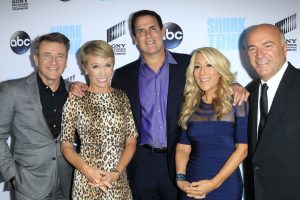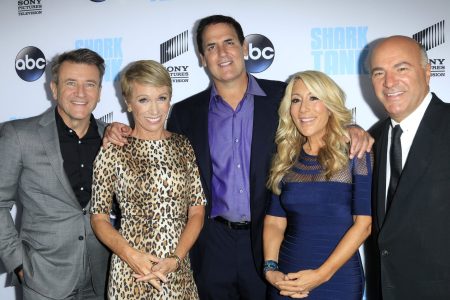Entrepreneur
Tariffs are no longer just economic tools. They are branding tests, exposing which CEOs think two moves ahead and which ones stand frozen like a deer in the headlights.
Birkenstock’s CEO, Oliver Reichert, knew better. He didn’t wait for tariffs to hit. He preloaded U.S. inventory before the ink dried on any official announcement. Interparfums’ CEO Philippe Benacin didn’t wait for the first uncomfortable question from investors. He raised prices before anyone even asked about margins.
This is a vivid message to the market: I’m predictive, not reactive.
Reaction speed is the new leadership KPI
Today, CEOs are judged by how fast they pivot under pressure. They are evaluated by how quickly they react, not respond. This is the new measuring stick of CEO branding.
“Stoic silence” doesn’t signal strength. It signals indecision. And that signals a lack of direction and conviction. It can erode the brand that spent years building. Most of the time, silence in a crisis tells a simple story:
- You didn’t see it coming.
- You didn’t prepare.
- You’re waiting for someone else to set the narrative for you.
- You’re not a trusted leader.
And if you don’t own your story, someone else will. Investors, customers and competitors will all write it for you.
There are some exceptions to the rules. If you know the response will create a “firefight” or keep the story alive for longer than it naturally would on its own, silence may be an option.
Related: 4 Secrets to Unwavering Leadership Amidst Turbulent Times
We are in the era of predictive branding
Predictive CEOs don’t wait for a tidal wave to hit. They build levees before the clouds even gather.
That’s the real play. Anticipation is key and will itself become a brand asset. When Birkenstock preloaded inventory, Oliver Reichert wasn’t just managing supply chain risk. He was telling retailers and consumers: We’re thinking farther ahead than the competition.
When Interparfums announced price hikes proactively, Philippe Benacin was demonstrating leadership to partners, investors and customers alike. Predictive moves send a silent but deafening signal: “Our leadership sees around corners.”
And in a crowded, chaotic market, that perception is priceless.
The hidden costs of waiting
Some CEOs convince themselves that patience is wisdom. “Let’s wait and see,” they say, nodding sagely around the boardroom table.
Here’s what “waiting and seeing” actually buys you:
- Leaked narratives to the press you can’t control.
- Competitors who frame your brand as slow, weak, or confused.
- Customers who lose faith before you even open your mouth.
- Investors who slash your valuation while you’re still drafting a statement.
Crisis management isn’t a private exercise; it’s often a public performance. It’s a way to uplift or derail your CEO brand. And the faster you step onto the stage with your own script, the better chance you have of keeping your reputation intact.
Related: How to Stop Regretting Your Decisions and Make Better Choices
Brand erosion is silent until it isn’t
A brand rarely dies with a bang. It dies with a series of small silences, tiny hesitations and missed narrative opportunities.
One delay leads to another. One unanswered question becomes a hundred. Soon, you’re not seen as strategic, but instead you’re seen as slow.
Birkenstock and Interparfums understood this. They didn’t just act faster than their competitors. They branded their speed. That’s the next level of leadership. You signal that you’re the type of leader who is already preparing for them.
Leadership is a narrative sport
Forget spreadsheets for a moment. Forget market share. At its core, leadership today is a narrative sport. And the winning narrative is simple: I saw it first. I moved first.
When CEOs move preemptively, they’re writing a story of mastery and taking their CEO brand in their own hands.
They’re telling employees: Your jobs are secure because we play chess, not checkers.
They’re telling investors: Your money is safe because we anticipate, not react.
They’re telling competitors: You’re chasing our shadow, not the other way around.
The question every CEO must answer
When the next tariff drops, the next regulation shifts, or the next public sentiment wave hits, your brand will face a new test.
It won’t be: Did you respond? It will be: Did you move before anyone even knew you had to?
It will be: Did you act like a chess player or a deer in headlights?
Because in this new economy, CEO branding is about predicting weather patterns and setting sail before the rest of the fleet even notices the winds are changing.
Win tomorrow by narrating today
You don’t have to control everything. You can’t predict every crisis. But you can control your speed. You can control your voice. You can control whether your brand is the first voice or the last apology.
The CEOs who dominate the next decade will narrate them before the headlines catch up.
They’ll play chess in a room full of frozen deer.
Which one will your CEO be?
Tariffs are no longer just economic tools. They are branding tests, exposing which CEOs think two moves ahead and which ones stand frozen like a deer in the headlights.
Birkenstock’s CEO, Oliver Reichert, knew better. He didn’t wait for tariffs to hit. He preloaded U.S. inventory before the ink dried on any official announcement. Interparfums’ CEO Philippe Benacin didn’t wait for the first uncomfortable question from investors. He raised prices before anyone even asked about margins.
This is a vivid message to the market: I’m predictive, not reactive.
The rest of this article is locked.
Join Entrepreneur+ today for access.
Read the full article here









